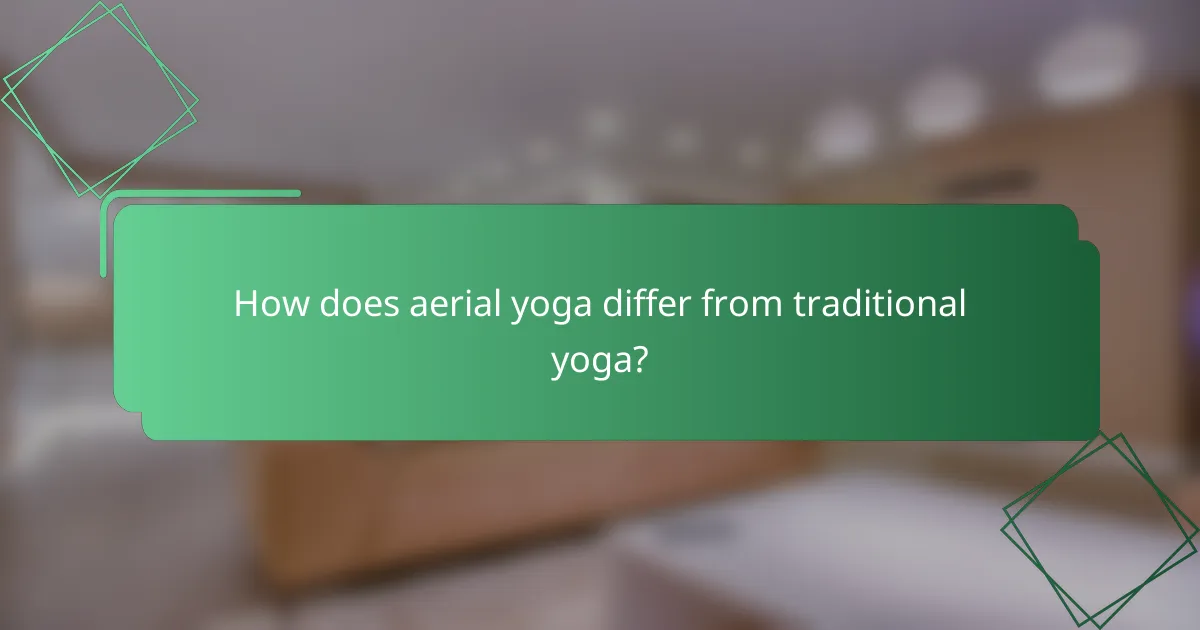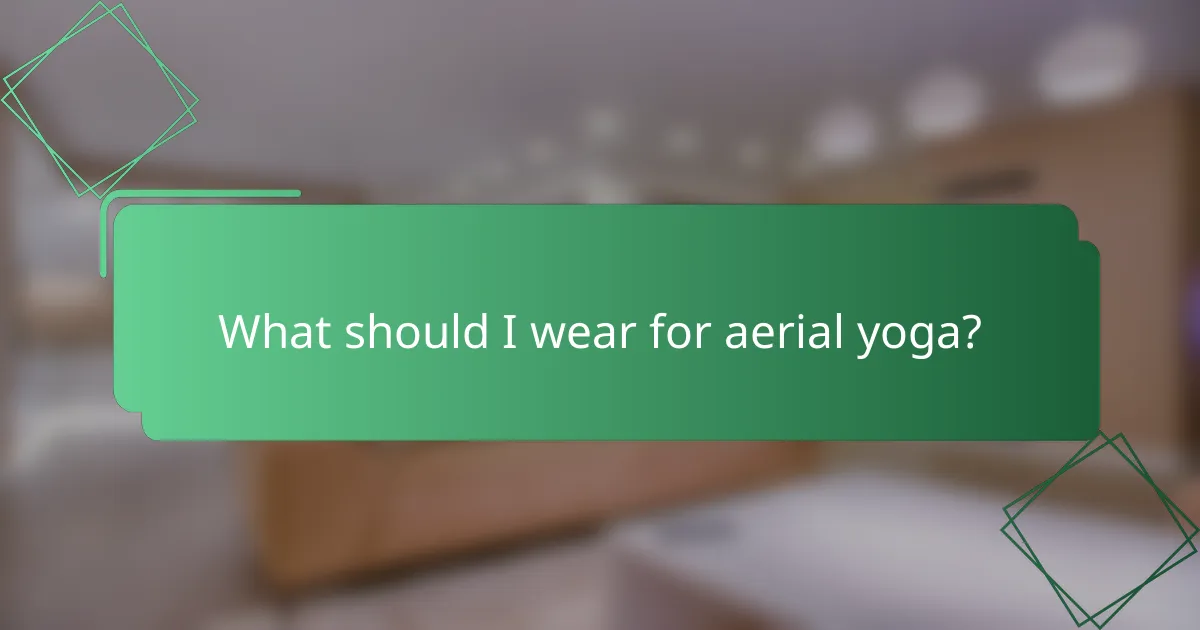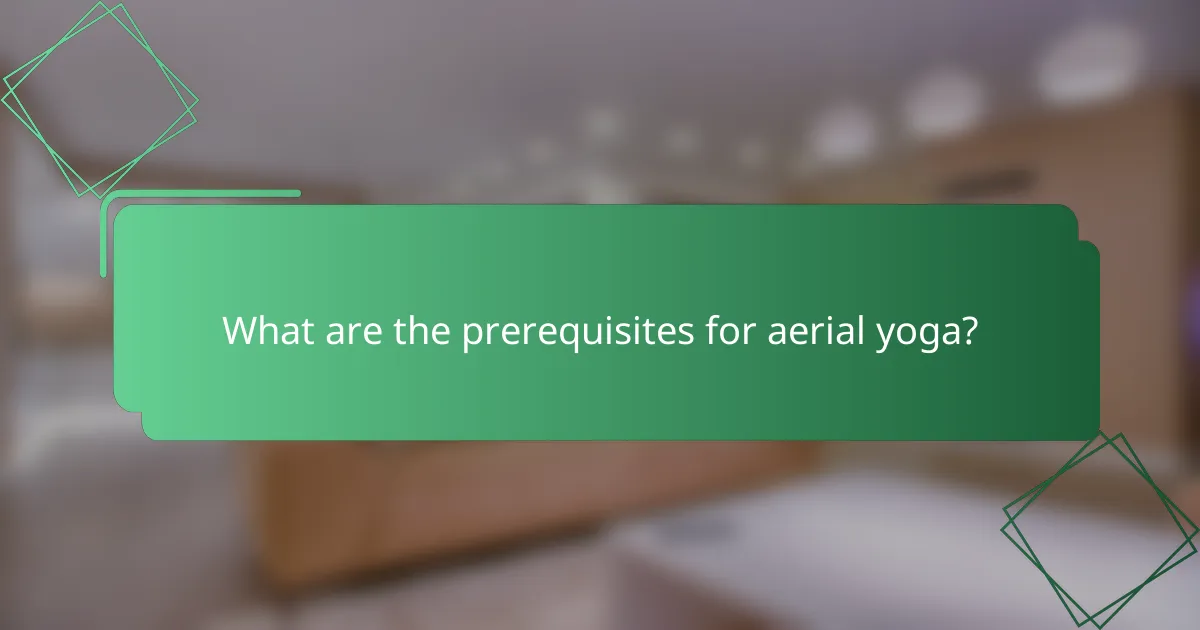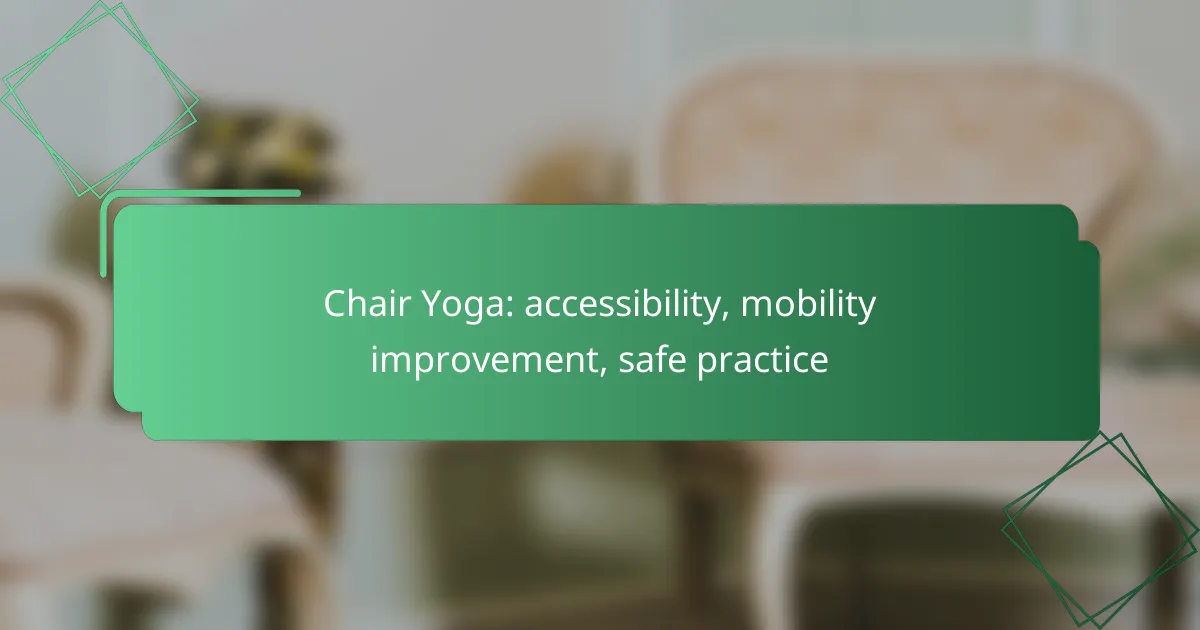Aerial yoga is a captivating practice that combines traditional yoga poses with the support of a suspended fabric hammock, creating a gravity-defying experience. This unique approach not only enhances core strength and flexibility but also encourages a sense of playfulness and exploration in movement. Ideal for those seeking to deepen their yoga practice, aerial yoga offers a fun and effective way to improve balance and body awareness.

What are the benefits of aerial yoga?
Aerial yoga offers numerous benefits, including improved core strength, enhanced flexibility, reduced stress, better balance, and increased body awareness. This unique practice combines traditional yoga poses with the support of a suspended fabric hammock, allowing practitioners to explore movements that may be more challenging on the mat.
Improves core strength
Aerial yoga significantly enhances core strength by engaging the abdominal muscles during various poses. The instability of the hammock requires constant muscle activation to maintain balance and control, leading to stronger core muscles over time.
To maximize core engagement, focus on poses like the aerial plank or inverted positions. Practicing these regularly can lead to noticeable improvements in overall stability and strength.
Enhances flexibility
Practicing aerial yoga can greatly improve flexibility as the hammock allows for deeper stretches and greater range of motion. The support of the fabric helps to alleviate strain on joints, making it easier to explore challenging stretches.
Incorporate poses such as the aerial split or backbends to target specific areas. Regular practice can lead to increased flexibility in the hips, spine, and shoulders.
Reduces stress
Aerial yoga is an effective way to reduce stress by promoting relaxation and mindfulness. The gentle swaying motion of the hammock can have a calming effect, helping to release tension from the body and mind.
To enhance stress relief, focus on deep breathing techniques during your practice. This combination of movement and breath can create a meditative experience that helps alleviate anxiety.
Boosts balance
Engaging in aerial yoga helps improve balance through the use of the hammock, which challenges your stability. Many poses require you to find your center of gravity, enhancing your overall coordination and balance skills.
Incorporate balancing poses like the aerial tree or warrior to develop these skills. Practicing regularly can lead to better balance in daily activities and other physical pursuits.
Increases body awareness
Aerial yoga fosters a deeper connection to your body, enhancing body awareness. The unique experience of moving through space in a hammock encourages mindfulness and an understanding of how your body moves and functions.
To cultivate body awareness, focus on the sensations you experience during each pose. This heightened awareness can translate into improved posture and movement patterns outside of your practice.

Where can I find aerial yoga classes in Los Angeles?
Aerial yoga classes in Los Angeles can be found at various local studios and online platforms. These classes offer a unique experience that combines traditional yoga with the use of aerial hammocks, enhancing core strength and flexibility.
Local studios offering classes
Los Angeles is home to numerous studios that specialize in aerial yoga. Popular options include Air Yoga, YogaWorks, and The Aerial Studio, each providing a range of classes for different skill levels. Many studios offer introductory sessions, making it easy for beginners to get started.
When choosing a studio, consider factors such as class size, instructor experience, and the type of aerial equipment used. It’s advisable to check for any special promotions or packages that may be available for new students.
Online platforms for virtual classes
For those who prefer practicing at home, several online platforms offer virtual aerial yoga classes. Websites like YogaGlo and Glo provide a variety of on-demand sessions that cater to different skill levels and styles.
When selecting an online class, ensure that the platform offers clear instructions and demonstrations. Look for classes that include modifications for beginners and tips for safely using aerial hammocks at home.

How does aerial yoga differ from traditional yoga?
Aerial yoga sets itself apart from traditional yoga by incorporating hammocks to support the body, allowing for unique poses and movements. This method enhances flexibility and strength while providing a playful, gravity-defying experience that is not typically found in standard yoga practices.
Use of hammocks
The use of hammocks in aerial yoga allows practitioners to perform poses that may be challenging on the mat. These suspended fabrics provide support, enabling deeper stretches and facilitating balance. They can also reduce the risk of injury by allowing for safer transitions between poses.
Hammocks come in various materials and sizes, typically made from strong, breathable fabric that can support significant weight. When choosing a hammock, ensure it is properly installed and meets safety standards to prevent accidents during practice.
Focus on inversion poses
Aerial yoga emphasizes inversion poses, which involve positioning the body upside down. These poses can improve circulation, boost core strength, and enhance overall body awareness. Practicing inversions in a hammock can make these challenging positions more accessible and enjoyable.
Common inversion poses include the downward dog and the flying pigeon, which can be performed with the support of the hammock. Beginners should start with basic inversions and gradually progress to more advanced variations as they build confidence and strength.
Varied difficulty levels
Aerial yoga offers varied difficulty levels, making it suitable for a wide range of practitioners, from beginners to advanced yogis. Classes often provide modifications and options to cater to different skill levels, allowing everyone to participate and benefit from the practice.
When starting aerial yoga, look for beginner classes that focus on foundational poses and safety techniques. As you gain experience, you can explore more complex movements and sequences that challenge your strength and flexibility.

What should I wear for aerial yoga?
For aerial yoga, wear comfortable, form-fitting clothing that allows for a full range of motion. Avoid loose garments that could get caught in the aerial silks or impede your movements.
Comfortable, form-fitting clothing
Choose materials that are stretchy and breathable, such as spandex or moisture-wicking fabrics. Leggings or fitted shorts paired with a snug top are ideal, as they provide support and flexibility during poses.
Avoid clothing with zippers or embellishments that could snag on the silks. Opt for long sleeves or layers to protect your skin from friction against the fabric, especially during inversions.
Footwear recommendations
Aerial yoga is typically practiced barefoot to enhance grip and feel on the silks. If you prefer some coverage, consider wearing grip socks that have rubberized soles for added traction.
Do not wear shoes, as they can damage the equipment and hinder your movements. If you have concerns about hygiene, bring a personal mat or towel to place under your feet during practice.

What are the prerequisites for aerial yoga?
Aerial yoga requires a basic level of fitness but does not necessitate prior yoga experience. Participants should be comfortable with body weight exercises and have no significant health issues that could hinder their ability to engage in this unique practice.
Basic fitness level
To participate in aerial yoga, a basic fitness level is essential. This includes having the strength to support your body weight and perform movements that may involve lifting or balancing. Individuals should be able to engage in moderate physical activities like walking, jogging, or basic strength training.
It’s beneficial to have a good sense of body awareness and coordination, as aerial yoga involves using a hammock to perform various poses. Beginners may find it helpful to engage in preparatory exercises, such as core strengthening or flexibility routines, to enhance their readiness for aerial classes.
No prior yoga experience required
Aerial yoga is designed to be accessible, meaning no prior yoga experience is necessary. Classes often start with foundational poses that accommodate beginners, allowing them to gradually build confidence and skills. Instructors typically guide participants through each movement, ensuring everyone can follow along.
For those new to yoga, aerial classes can be a fun introduction to the practice. The supportive hammock can help alleviate fears of falling or struggling with balance, making it easier to explore different poses and deepen flexibility without the usual pressure of traditional yoga settings.










